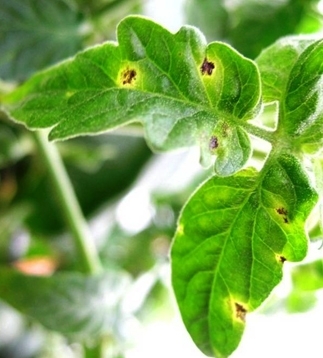
They're pests of fruits, vegetable and horticultural crops, including tomatoes, grapes, strawberries and soybeans. They're barely visible to the naked eye, but oh, how disastrous they can be. Some thrips transmit plant diseases, such as the tomato spotted wilt virus.
Enter Professors George Kennedy and Diane Ullman.
Kennedy, the William Neal Reynolds Distinguished Professor of Agriculture at North Carolina State University. Raleigh, N.C., will speak on "Modeling the Epidemiology of Tomato Spotted Wilt: Understanding the Role of Thrips Population Dynamics and Virus Inoculum Sources" from 12:10 to 1 p.m., Wednesday, April 1 in 122 Briggs Hall, as part of the UC Davis Department of Entomology and Nematology's winter seminar series.
Colleague/collaborator DianeUllman will introduce him.

"Effective management of this virus in commercial crop production systems requires an understanding of the factors that determine the timing and magnitude of virus spread. This seminar will discuss the ways in which seasonal weather events influence the dispersal dynamics of vector thrips populations, the abundance of virus inoculum sources in the landscape, and ultimately the timing and magnitude of TSWV spread into susceptible crops. It will further provide an illustration of how efforts to model these relationships improved understanding of the epidemiology of TSWV and led to the development of a TSWV risk prediction tool that is now being used in pest management decision making."
Kennedy, past president of the Entomological Society of America (ESA), holds a bachelor's degree in entomology from Oregon State University and a doctorate in entomology from Cornell University. See his biosketch on the ESA website.
Ullman and Kennedy are among those organizing two consecutive mid-May conferences at the Asilomar Conference Center, Pacific Grove. International scientists, Extension specialists, and agricultural industry professionals will target thrips and insect-vectored pathogens.

The second conference is the Xth International Symposium on Thysanoptera and Tospoviruses, to be held May 16-20. "This meeting is the tenth in a series of international symposia that, over 30 years, have grown to be the dominant vehicle and venue for information exchange between scientists investigating problems related to thrips and tospoviruses around the world," Ullman said. "These symposia have been instrumental in extending knowledge and producing new solutions and innovations in thrips and tospovirus management worldwide, by providing a forum for sharing research findings and integrating fundamental and applied knowledge.
And about those thrips...
The tiny insects pierce hundreds of species of plants, sucking the nutrients and causing billions of dollars in damage to U.S. agricultural crops. As mentioned, they transmit plant viruses in the genus Tospovirus, such as the tomato spotted wilt virus. Read more on the UC IPM website.
“There are 23 additional approved and emerging tospovirus genotypes transmitted by at least 14 thrips species (Thysanoptera: Thripidae),” said Ullman, who has been researching thrips and tospoviruses since 1987.
That's something to think about when you're planting your tomatoes this spring...
Attached Images:
